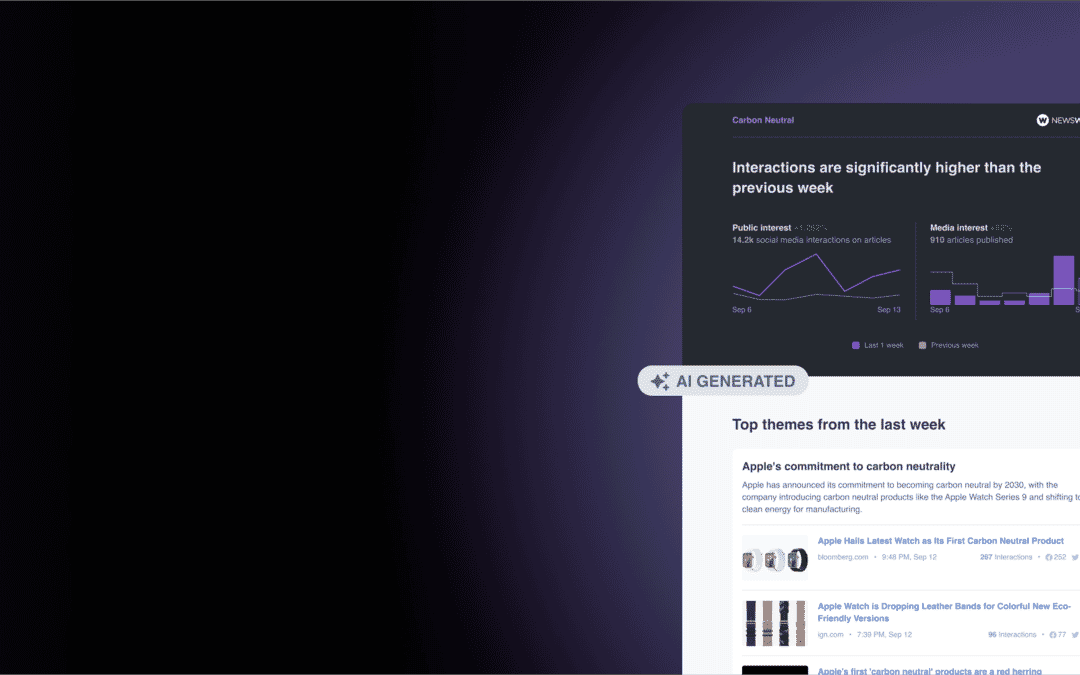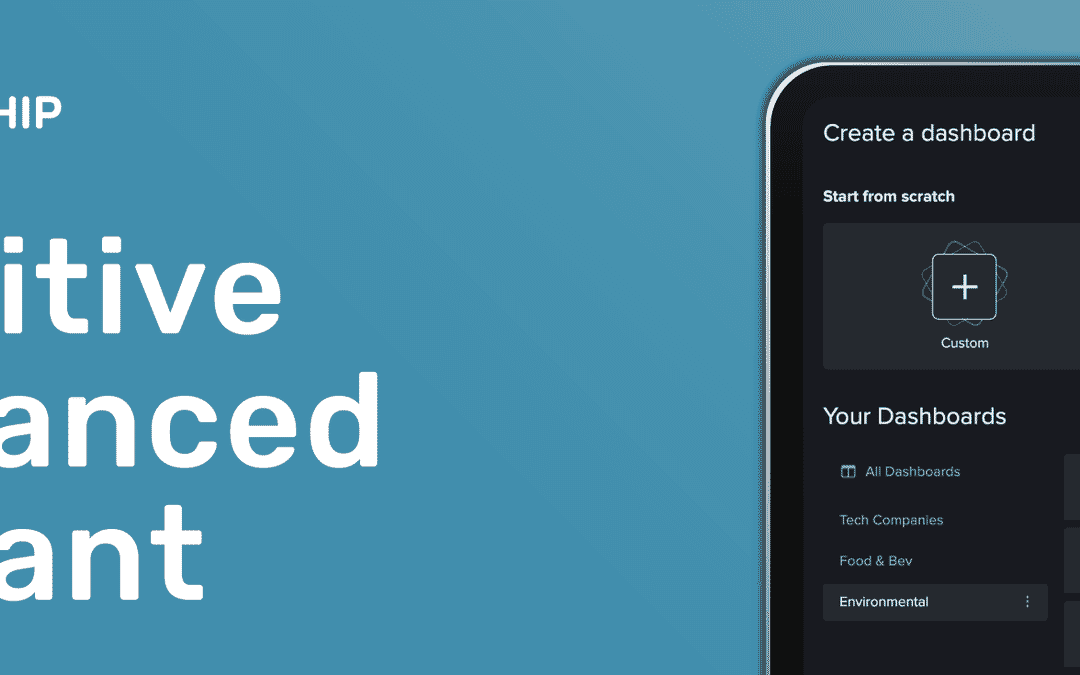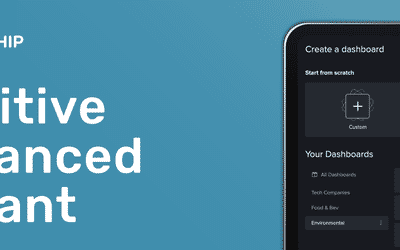We talked to NowThis’s VP of Social about their take on social distribution, and how they get viewers to watch directly on social platforms.
Ashish Patel is the VP of Social at NowThis, a video news service that reaches viewers natively on social media. Prior to joining NowThis, he was Head of Social for Vice, so he knows a thing or two about building audiences on social media.
We talked to him about NowThis’s decision to scrap their homepage, producing social native content to be consumed directly in the news feed, the team’s use of Spike, and more.
——–
What’s your role at NowThis?
I wear a few hats. My main role here is to manage our social insights team. We analyse and monitor data and deliver optimisation recommendations both on the distribution as well as the content production side. We then turn those insights into actionable best practices.
On the distribution side, that’s everything from how many times we message to how much copy we utilise, down to how we package each piece of content – what filters we use, what types of end slates and front slates we put on – so, all this is heavily tested and analysed. We work very closely with the content team to make these changes on the fly as fast as possible.
Previous to this, I was Head of Social globally for Vice Media. We had a similar distribution process, backed heavily by data, whereas the editorial team wasn’t as integrated. Here (at NowThis), we have true integration with our insights team. Insights are leading content decisions, and vice versa.
Can you tell us more about NowThis’s recent decision to do away with their homepage?
The decision was both based on consumption habits we measured amongst our audience, and on the macro level, considering trends in the industry and looking at how people in general are consuming content. Paired with that was a projection of how video consumption will look in the future.
Ultimately, our goal is to get viewership of NowThis video. There are a lot of ways to do that, through building our own audience, optimising for sharing, and so on. But what we want to do is get users to see the videos as soon as possible. The company was founded with that intention in mind, that NowThis would be a short form video news service, built for mobile and social.
The message greeting visitors to NowThis’s new ‘homepage’.
Essentially, shutting down the website was making that a truism for us. What we want to do is reduce that amount of friction that there is currently between the consumer and video consumption. We saw that an additional click is a fairly high barrier. Putting video natively into social news feeds helps consumption, paired with the fact that most most users are accessing through social. We just didn’t see the need to maintain a desktop site. We do still have mobile web, and there are ways you can link into that. But we don’t intend to post out links to any of our social platforms.
I think many publishers see social as a starting point to drive readers into this walled garden of content that they have and that they monetise, and they’re seeing that it’s increasingly difficult to do that. For us, we’re seeing social as a starting and end point, where consumption happens in the feed.
More on Martese Johnson, the 20 year-old UVA student brutally beaten by state liquor police: https://t.co/5ct9MTZN1W
— NowThis (@nowthisnews) March 18, 2015
On Facebook, there’s a lot more native video in the news feed, and they’ve publicly stated their priority of becoming a video focussed platform. Twitter has been making inroads with their in-line video card, which we’ve been using. We’re really leveraging these platforms, because we’re seeing their products evolve that way.
So it was a fairly easy decision for us to make, since we weren’t tied to the Web 2.0 revenue model, where all the monetisation occurs on your own site. It’s easier for us to get users to videos natively. It’s not to say we didn’t have a decent amount of web traffic, it’s just not a focus for us. I don’t think it matches how people should consume media on mobile, specifically.
The social native experience seems great for the end user, but a lot of publishers are wary of giving social platforms the keys to the kingdom. What’s NowThis’s take?
I think on macro level, you’re seeing that trend in nearly every industry. From transportation, in the form of Uber, and retail, with Amazon and eBay. This device in our pockets has increased the delivery of that information, but it’s also created a very confusing and messy ecosystem of how find that content. So we just want to make it as easy as possible and to tell our consumers that, look, we understand that you use all of these different social platforms, and that you use them for different reasons.
Whether it’s your age, or the mood you’re in, or if you use Twitter for information and headline, and Facebook for the discovery element, we want to say we understand you’re using these products in this way, and we’re bringing the news to you, as opposed to you having to find us.
Moving on to the platforms themselves, which channels do you think are offering the most for publishers?
I think that each is different. What we do in terms of our editorial strategy and programming strategy is create native and platform appropriate content for each of those. So, the first thing we think about is the experience from the viewer’s point of view. I noticed in a lot of my work with Vice that publishers too many times try to introduce non-native actions into social platforms. We see that different types of stories resonate on different platforms. For example, it’s hard for us to do hard news stories on Instagram, because the main reaction mechanism there is a big pink heart. You don’t want to press that if there’s a Boko Harem story.
In terms of distribution, Facebook is the big one for practically all publishers. It’s great in terms of targeting capabilities. That said, we see that people use it for different purposes. That helps us segment our content into different categories. So for Facebook, we tend to see more success around more cause-driven or emotionally pulling content. On Twitter, it’s all about real-time.
Snapchat is our smallest community, I would say. But in my opinion, it’s our highest engaged. We see around 85% plus opening our stories on a daily basis, and then people sending comments and assets back. We’re also looking at gif-based news. Really, we’re trying to be appropriate for each platform.
With pageviews gone, how do you measure the performance of your content?
Each platform gives you different information. One of the things we were trying to do was create this cross-platform score, and we realised that these things are wholly different, and we should be looking at them differently. In certain platforms, where you don’t have as much access to data, we’re constantly logging and manually tracking things that we think are relevant to optimising the content.
For instance, Snapchat’s a difficult place, but we can see how many people open our stories, and take screenshots, and that gives us an indication of what type of stories are resonating on the platform.
Essentially based on whatever’s available, we figure out the best way of tracking and optimising.
I’m curious to learn about NowThis’s use of Spike. What features are the team using?
Spike is definitely part of our daily workflow. Our content producers and editors find stories and script them, and they find assets that we license. We have a very efficient workflow supported by proprietary tech that allows us to work very quickly. One major challenge for us is, with so many sources that we’re constantly tracking and monitoring, how do you surface stories in a timely manner. And beyond that, considering how long it takes to produce a video or editorial post. So it helps us decide whether a story is worth pursuing or not.
So specifically, we look at Spike’s velocity metric. Essentially, every editor has big screen set up in front of them, with multiple tabs. One of them is dedicated to listening. Spike is always being viewed. The new Heads-Up Display has been a massive addition to us. We’ve actually put it on a big screen that viewable across our newsroom, to make sure that no one misses a big story.
Our team is very plugged into social. We’re monitoring Twitter, Reddit, etc, and Spike is a major part of that flow. Essentially, we use Spike to surface the stories, and then we apply our insights against them. We know what type of stories work on each of our platforms. We’ll see something popping up on Spike and say ‘that’s a great Instagram post for us’, or ‘that’s a Twitter story for us.’ So we’re overlaying our own analytical work on top of what’s already in Spike to help us. It’s definitely a component of content process.
We don’t just go for what’s trending, we go for stories that we think our audience care about, that might not be trending at that time. Spike helps us find cues if there’s anything in terms of packaging or voice, or other ways that we can better position our content.
Would editors be searching for specific stories?
If we’re looking for a story that isn’t currently trending, and we want to see cues on how it’s being discussed, or handled, it’s a great way of breaking down the discussion around the topic.
How would you describe the role of editor at NowThis?
I think the thing that makes our editors different to those at different media companies is that they truly are very integrated and deeply understand social and social distribution. We have platform experts – dedicated people for Vine, Twitter, Facebook, Tumblr, etc – that deeply understand the audiences on each.
One thing that we realised is that you can’t reverse engineer the relationship with your audience. I think what’s unique about our editorial here is it’s truly integrated with social. Beyond having a unique story, there are other little ways and hooks of distributing your content.
I think that ultimately, views are our top KPI, but engagement is directly correlated to how many views we get.
Engagement is the metric we optimise around, and specifically, sharing. We aren’t beholden to traditional Web 2.0 metrics, and to a certain extent it is definitely enviable. On the other hand, we’re dependent on the platforms and users to help us distribute our content. So sharing is our most important metric. We really want to create important, informative, good, shareable content on each of these platforms.
What might we expect from NowThis in the coming months?
We’re really leaning in on going fully social and mobile distributed. We’re building some new experiences with the concept that we want to reduce the amount of friction it takes to get readers to quality, informative new video. We have a new app called Tap For News that’s towards that end. In the near future, I think you can expect to see us in more locations, starting to really define what it really means to be a distributed media company.
Sign up for a free Spike trial and find the stories that your audience will love.











